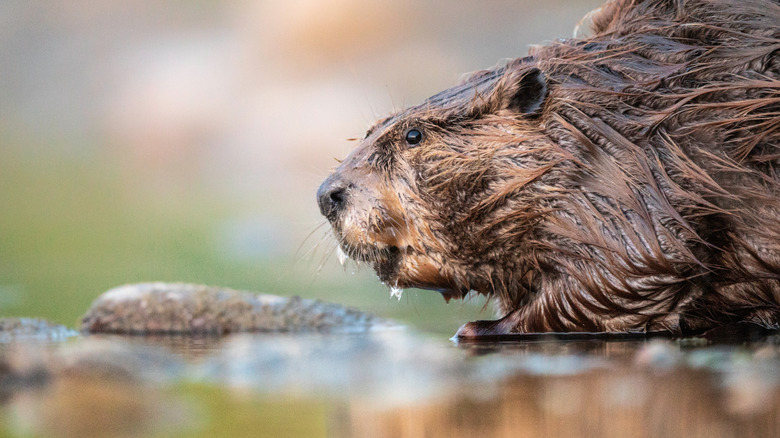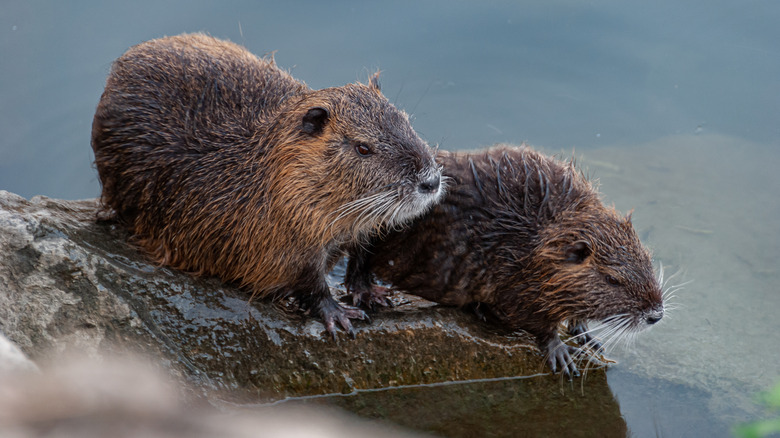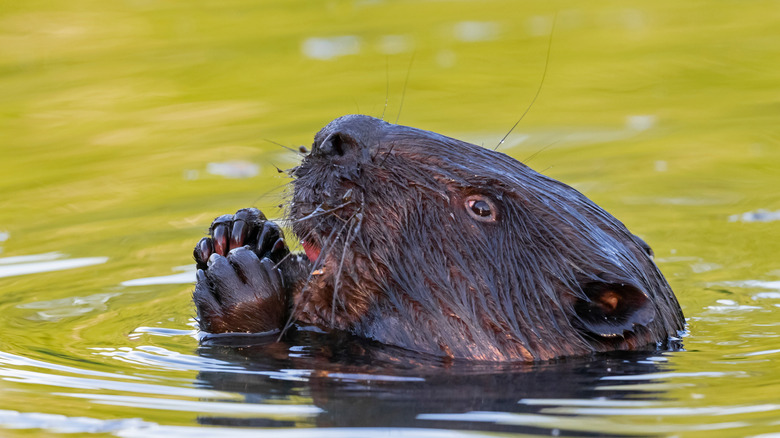What Is Castoreum And Why Should You Avoid It If You're Vegan?
Does the internet have you worried you're eating beaver butt? Before you get your vegan tail in a tizzy, take a deep breath. What do you smell? At the turn of the 20th century, you may have been picking up on castoreum, a pungent, sweet fluid harvested from Siberian, Alaskan, and Canadian beavers (via Mental Floss).
Castoreum — from the Latin castor, meaning beaver — is a gooey, milky yellow to gray liquid found in small sacs near the beaver's bum. The leaves and bark beavers dine on provide castoreum with its signature scent. Beavers spray castoreum (along with urine) to claim their territory on land (via National Zoo) and in water (via Journal of Chemical Ecology).
Historically, humans have used this animal product as a medicine. Later it became a perfume fixative and later still a flavor enhancer, mimicking the fruits smells of raspberry and strawberry with the musky undertones of vanilla.
Understandably vegans, who aim to avoid using or consuming any animal-derived products, want to ensure their food is beaver-free. Luckily, it is exceedingly rare for any modern American to accidentally bite into beaver butt. Castoreum extraction in the 21st century is both expensive and inconvenient — good news for both beavers and vegans.
Castoreum harvested today comes from living beavers
Much like leather is a co-product of the cattle industry, castoreum was once the natural co-product of the beaver trade (via the Economic History Association). From 1670 to 1870, beaver was an economy unto itself in both Europe and North America. Fashion trends involved all kinds of beaver pelt items, including ladies' coats and gentlemen's hats. Once the beavers had been slaughtered for their fur, the remaining castoreum sacs could also be harvested and roasted over a wood fire to further augment their unique aroma and flavor (via Mental Floss).
The beaver trade long gone, anyone needing castoreum today must procure it from living beavers by "milking" them for this sticky substance. The process involves anesthetizing the beaver and having a person massage the molasses-like goo from the sacs. Currently, only around 300 pounds a year are consumed. While that sounds like a large amount, when compared to natural vanillin at more than 2.5 million pounds per year, it's a drop in the (castoreum milking) bucket.
Since veganism defines practices like these to be both animal cruelty and exploitation, even these more ethical castoreum extraction processes don't meet vegan standards.
Vegans may not find castoreum in their food, but it may be hiding in their perfume
The rumors that castoreum is lurking in your (otherwise vegan) food as a "natural flavor?" They're not exactly true (via Mental Floss). While the FDA only requires that animal-derived foods be listed as "natural flavors" on label, the fact is that vegans today don't have to worry about accidentally encountering this non-vegan ingredient.
To function as a flavor, castoreum requires large amounts of the substance — numbers that dwarf current consumption rates, making it highly unlikely for a vegan to ever encounter castoreum. Anyone wanting to take a whiff of what this aquatic mammal has to offer will likely have to seek out the one food that relies on castoreum: BVR HJT, a schnapps from Sweden whose name in English literally translates to Beaver Shout. To avoid that, all vegans have to do is say nej.
These days, sweet and fruity foods get their flavor from extracts derived from vegan-friendly trees and plants instead of from beavers (via HuffPost). But castoreum may still appear in fragrances where, since the 1800s, it's been dried and added as a fixative to enrich other scents and keep them lingering longer. To sidestep this animal product, vegans can inquire with fragrance manufacturers to make sure their favorite scent also uses plant-based sources.


